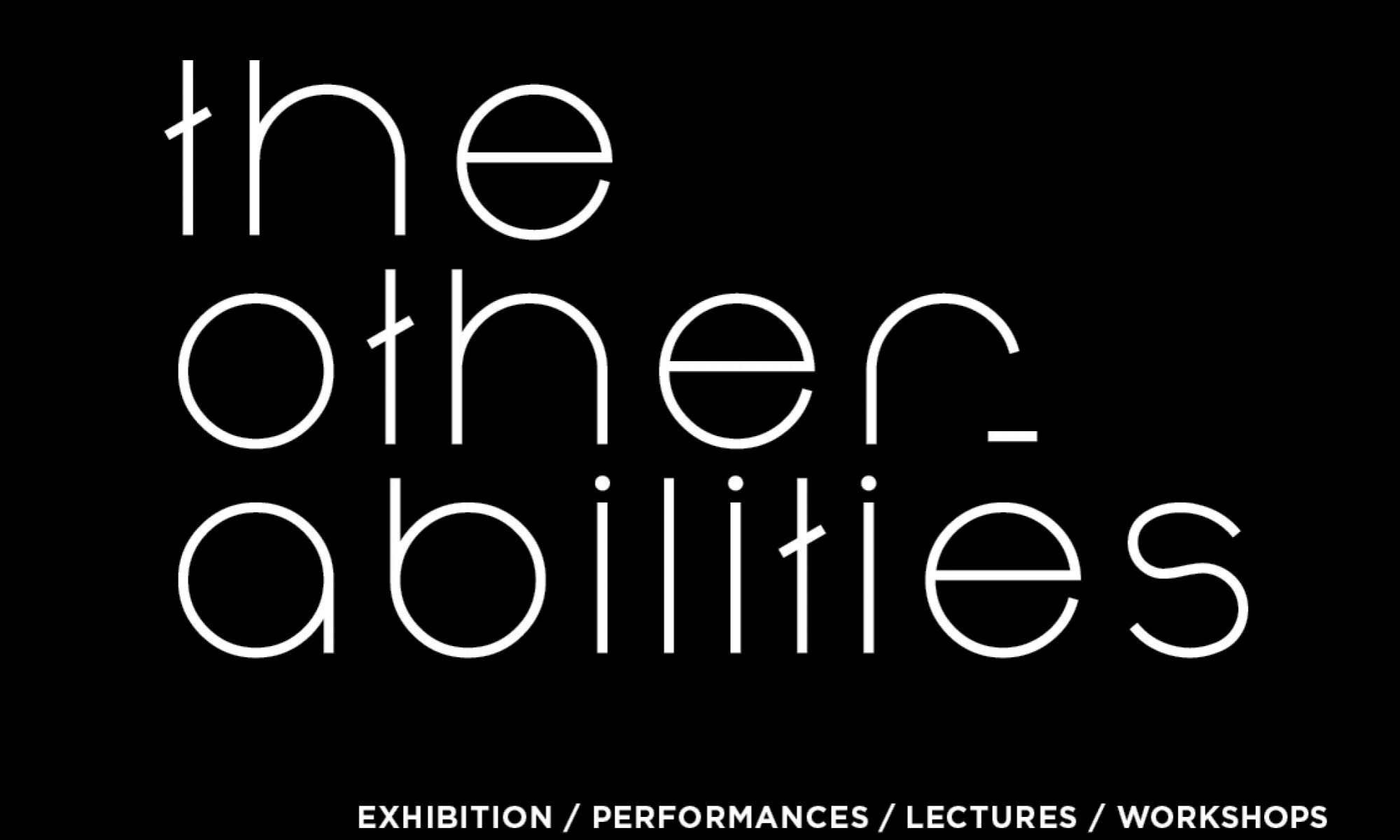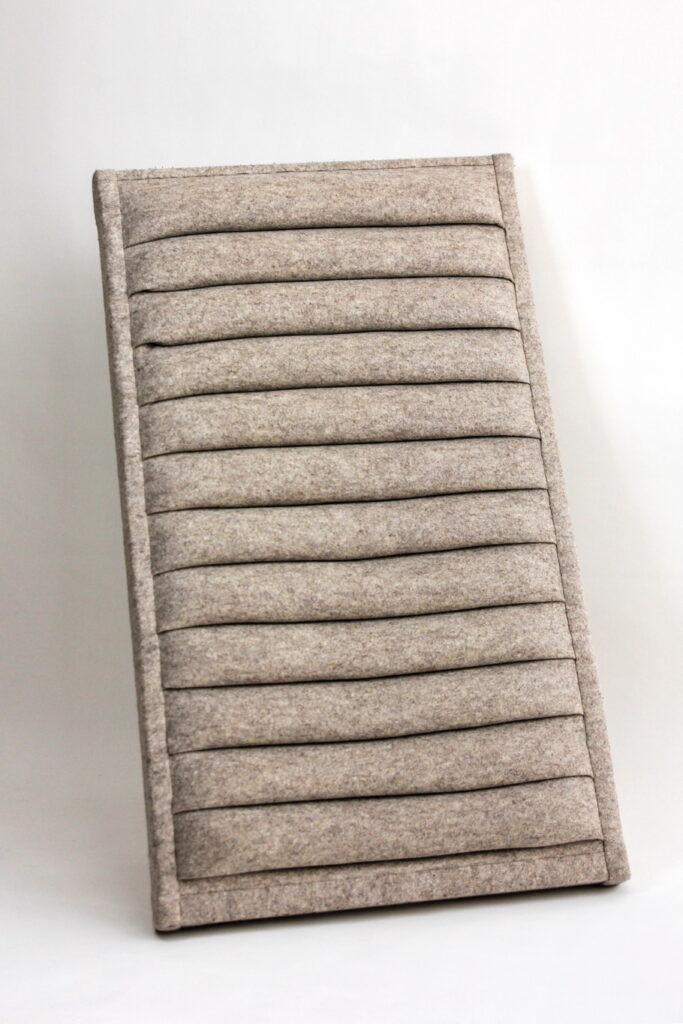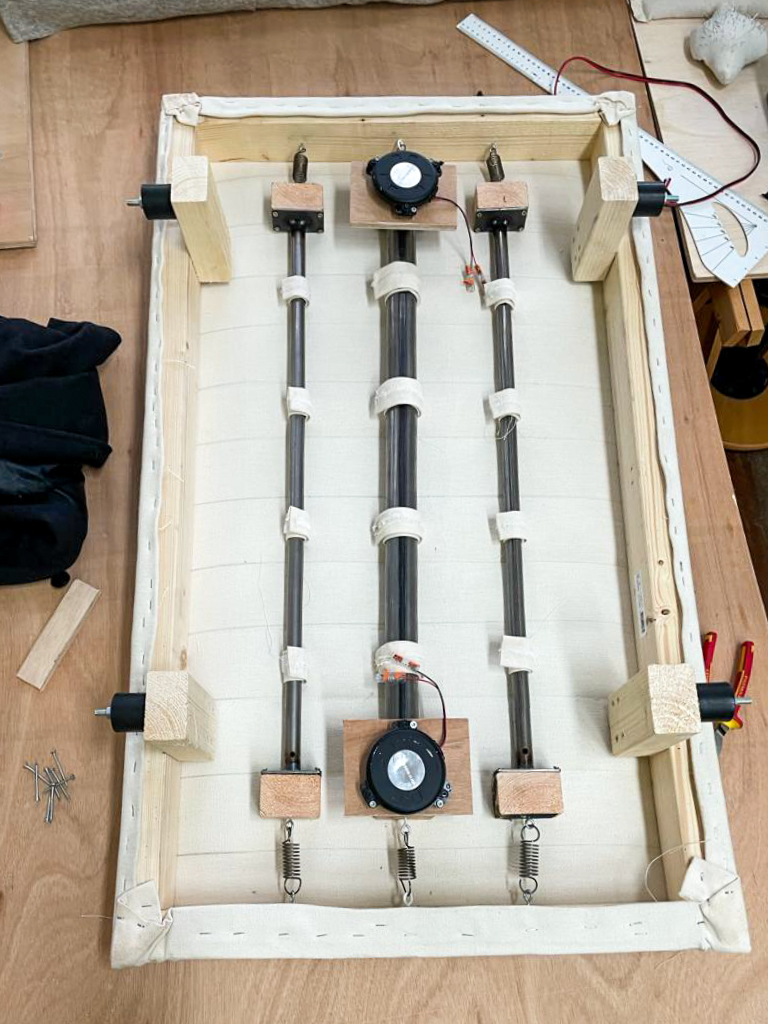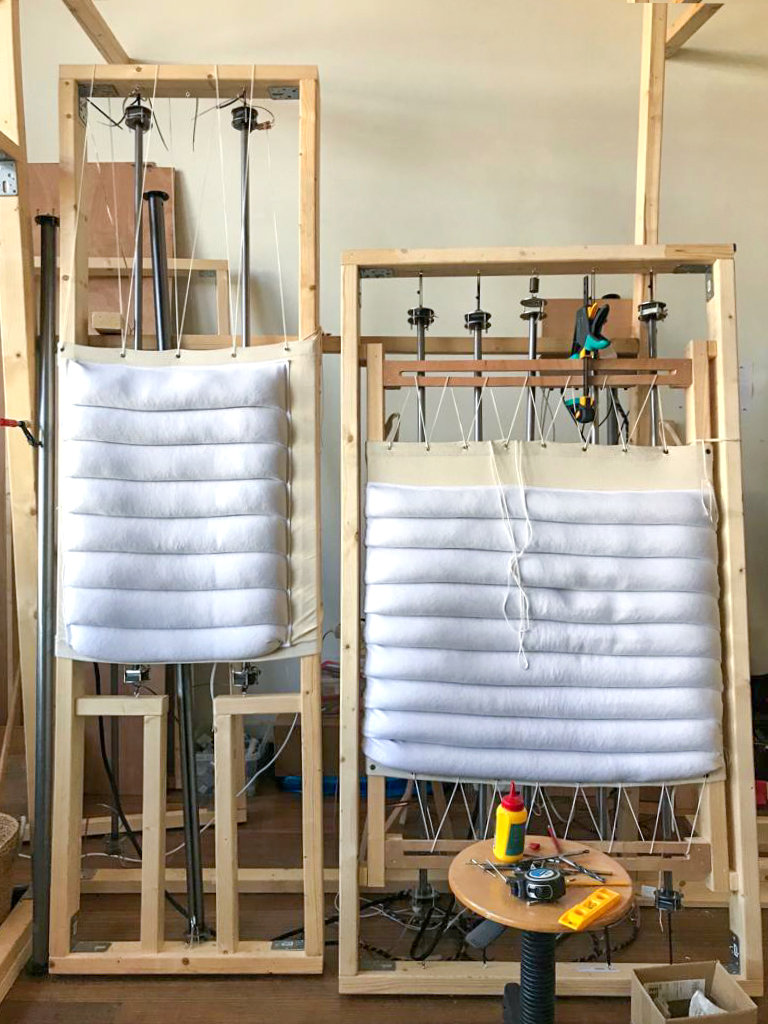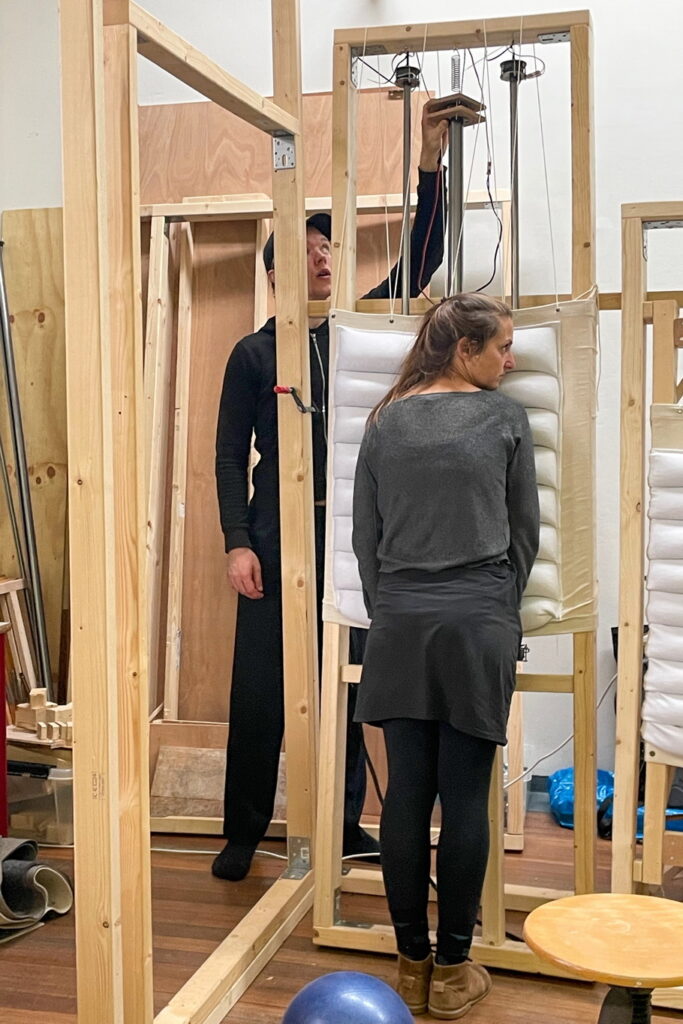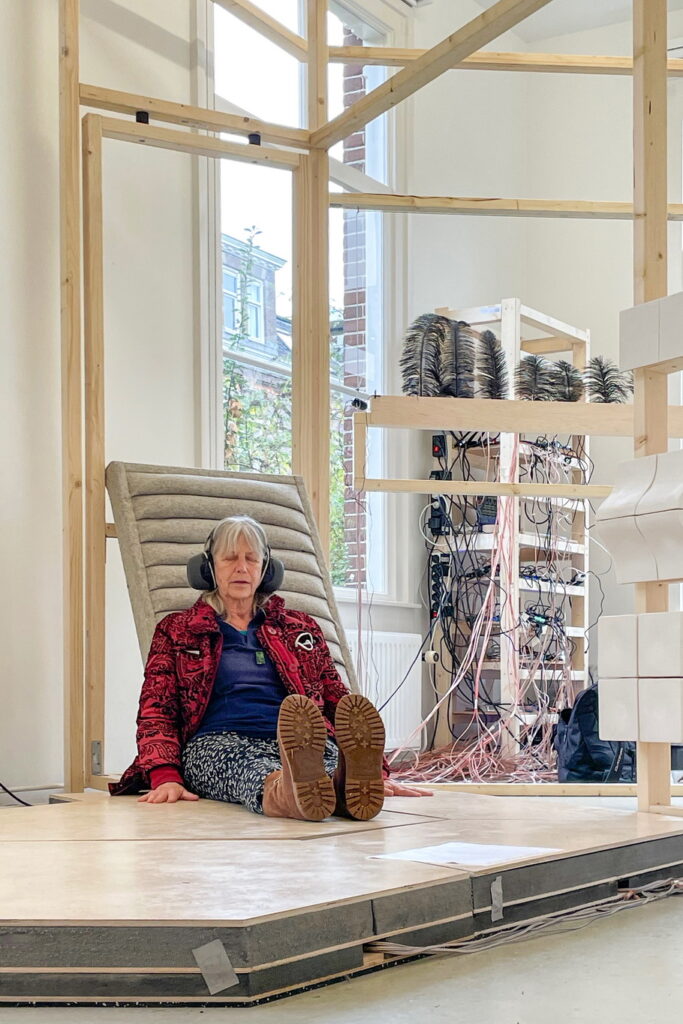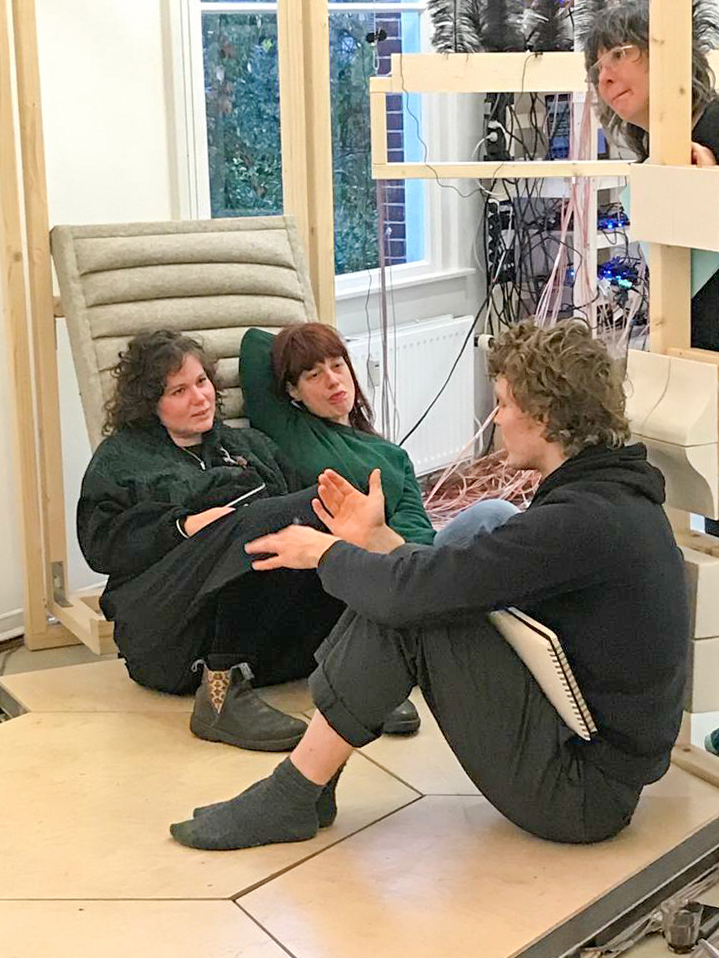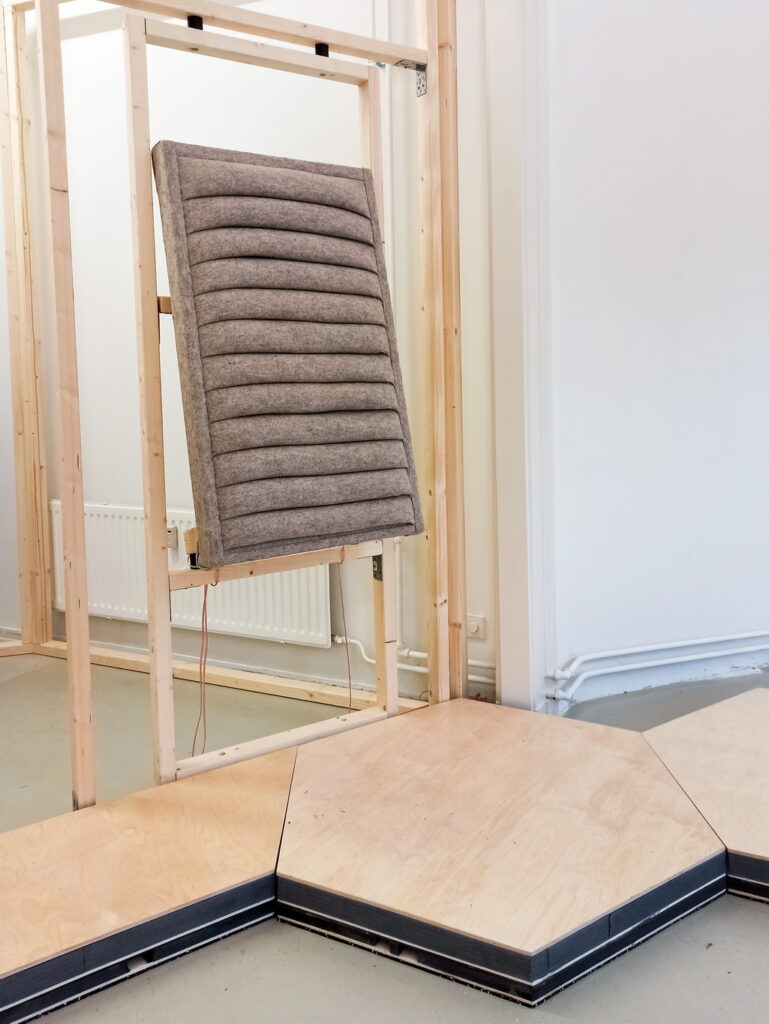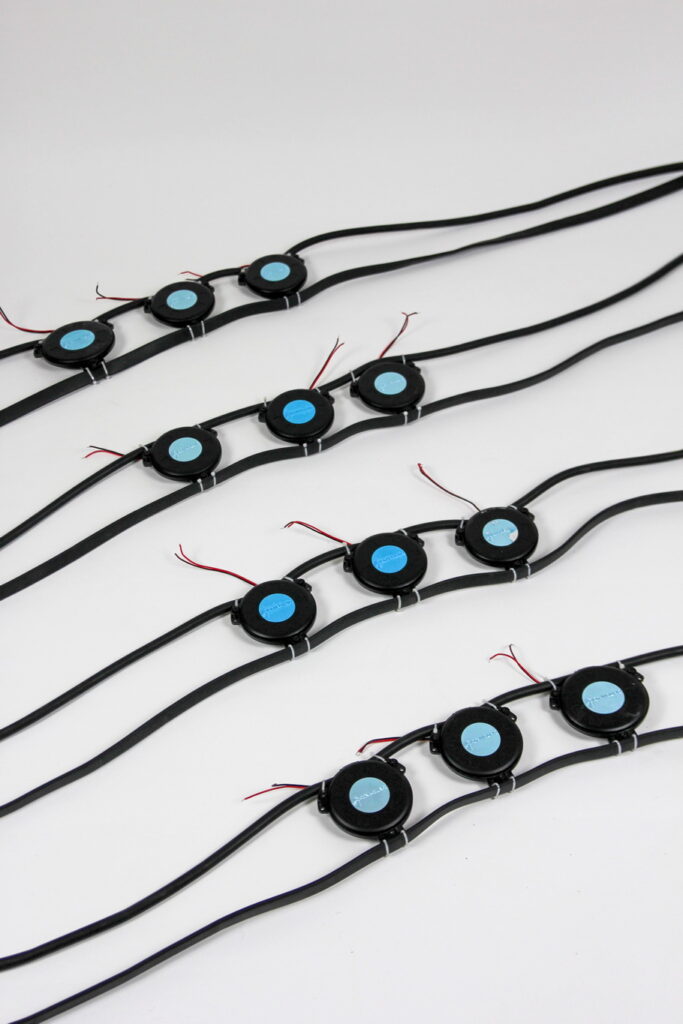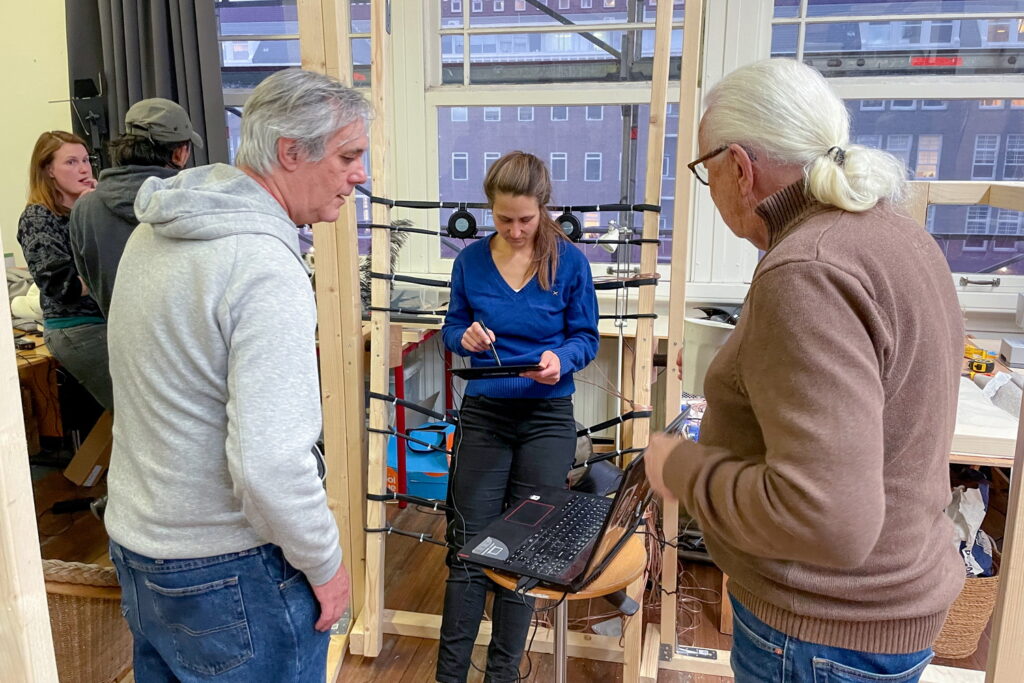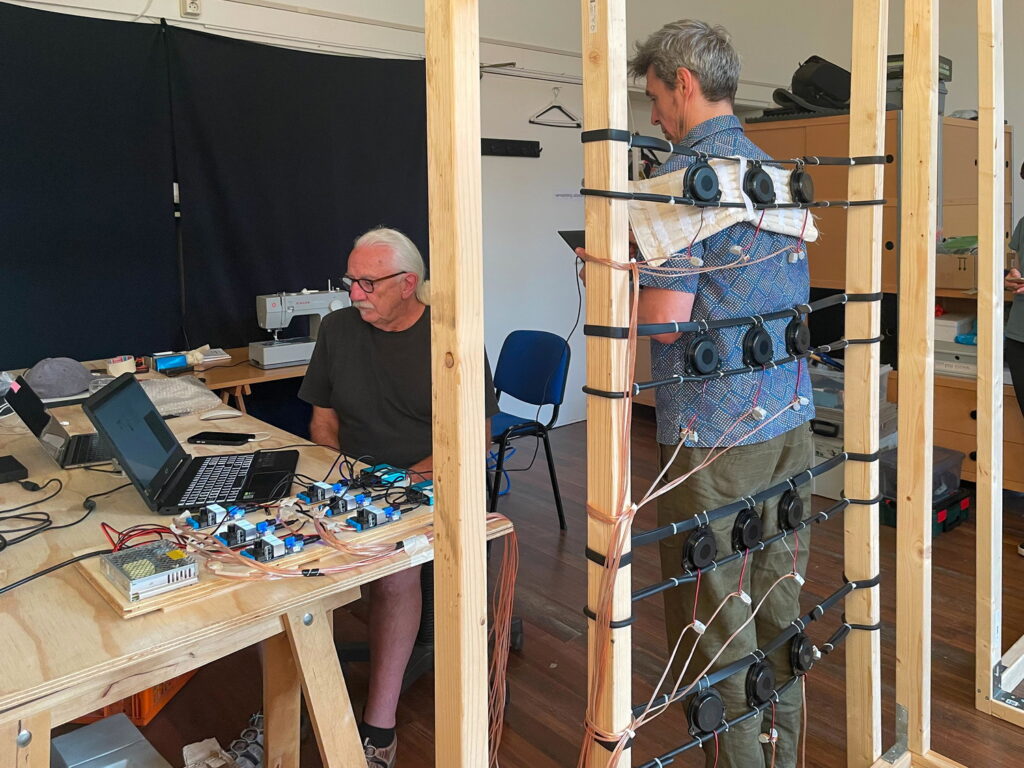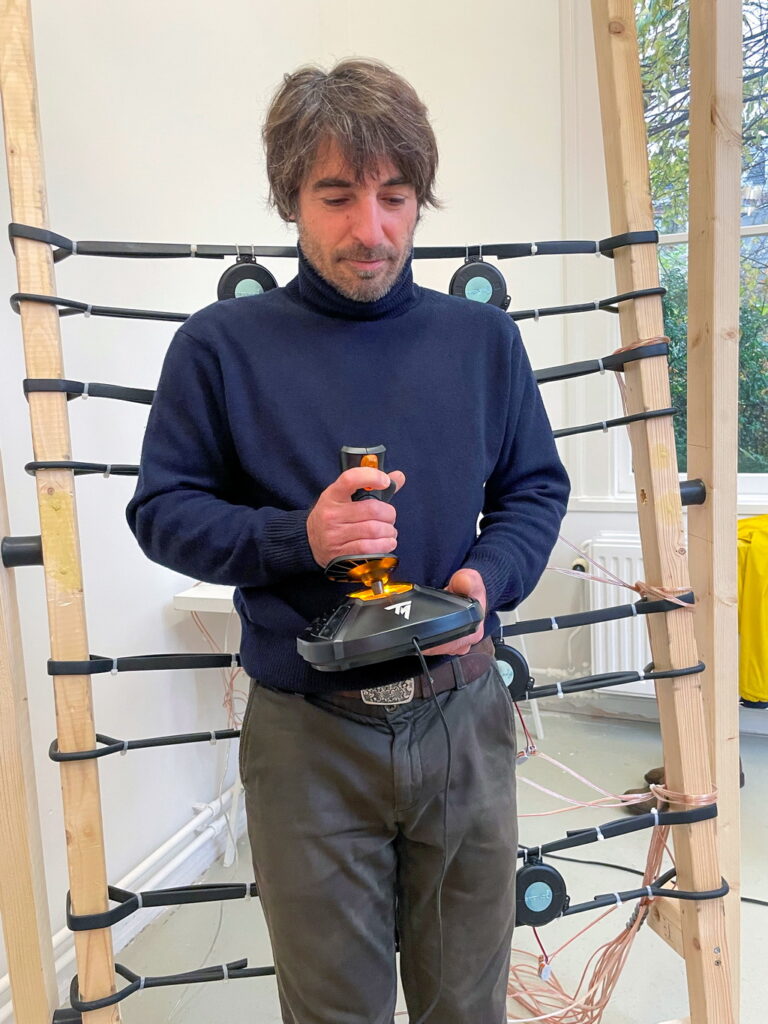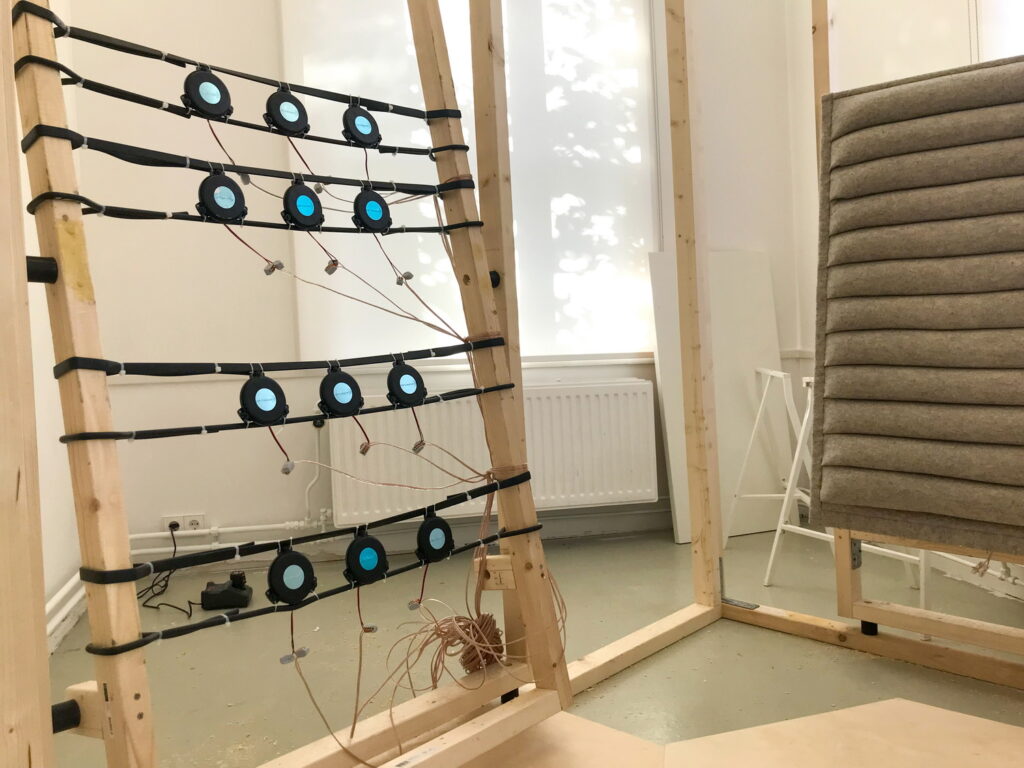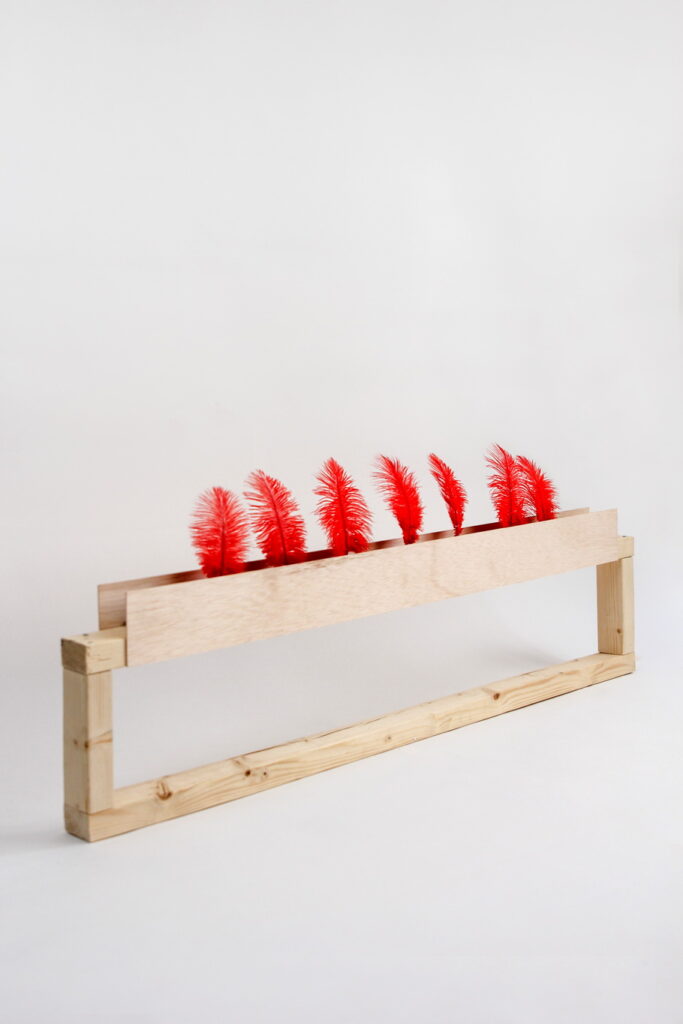
DIMENSIONS
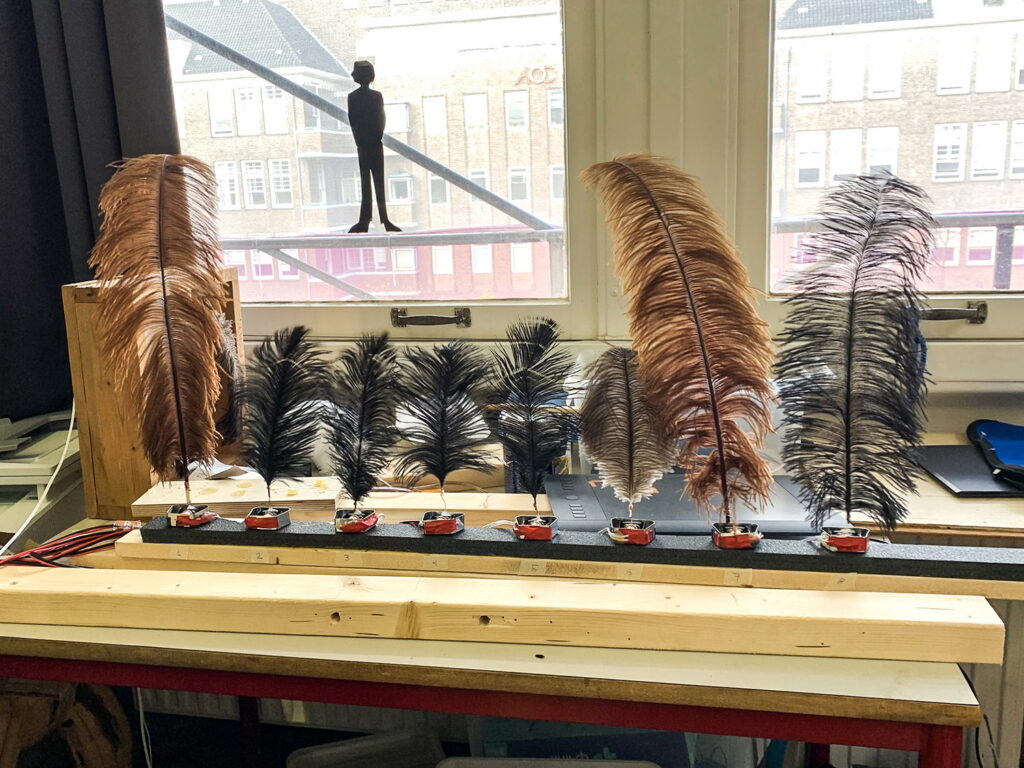
150cm x 30cm
LIST OF MATERIALS
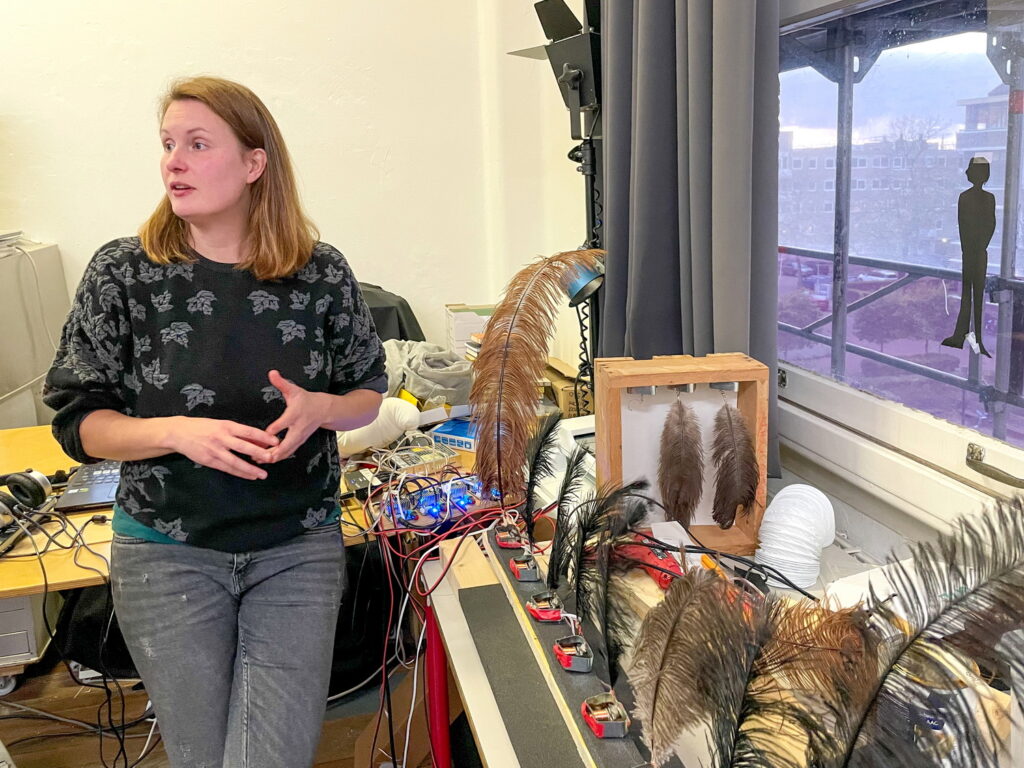
Woojer speakers, ostrich feathers, wooden frame, audio mapping software, amplifier, USB sound cards.
HOW IS THE PROTOTYPE MADE?
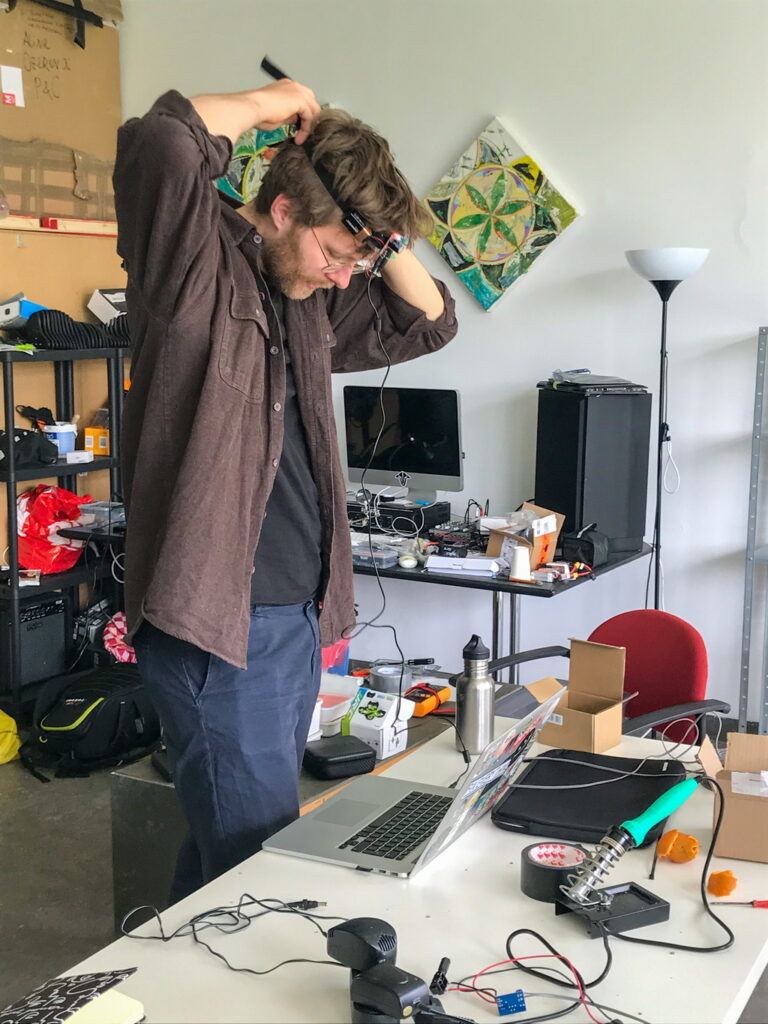
Multiple feathers, either in an array or in a frame, are attached to Woojer transducers with a piece of copper wire and move when the transducer moves. Software written in Max/MSP calculates the activity in different frequency bands of a sound, and maps this to the available amount of feathers-on-a-woojer. These then vibrate with a frequency between 5 and 20 Hertz, depending on the volume of the incoming band as well as the current settings for that band.
We believe not only translation in the “material sense” is important, but in the “software sense” of translation as well. Using software, anything can be made a control signal for anything else, on any timescale needed – this is an area we’d like to explore in more depth in the future.
HOW IS THIS PROTOTYPED USED
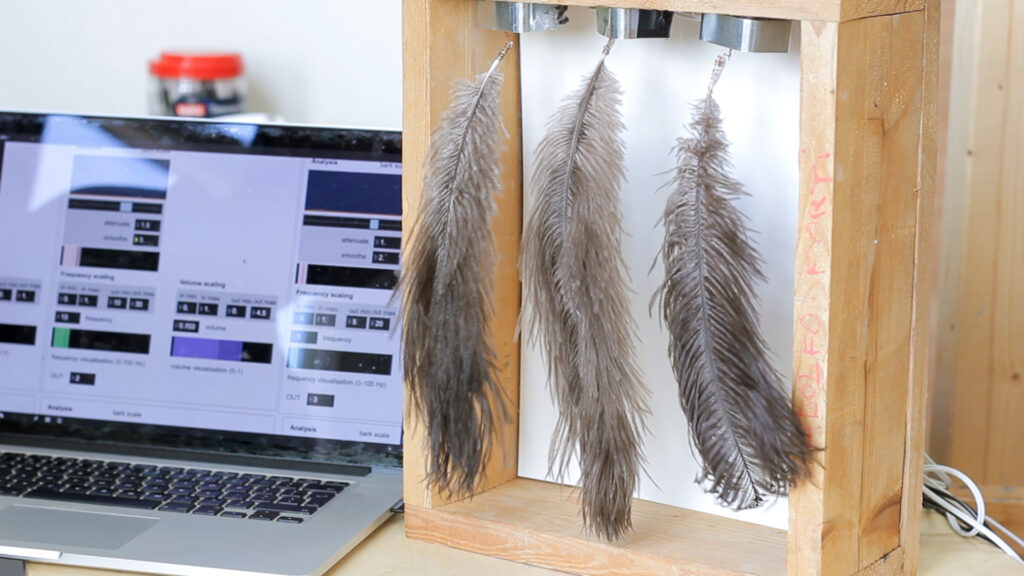
The research behind this prototype started with the intention to locate areas of translating sound that the rest of the WDIH? team were not engaging with. This led to the feathers prototype that translates high frequencies to movement. We tested the behavior of various materials (such as mylar blanket, paper, textile bits, and synthetic threads) under the influence of controlled airflow. During our research we found that the way feathers move, due to their “fractal” structure, feels quite “natural”. We switched from controlled airflow to the physical movement of the woojer speaker coil as a method of engaging the feathers. However, the movement of feathers is still partly defined by their ability to ‘behave’ in a certain way within the air environment.
The feathers prototype can be placed in the line of sight of a person who is simultaneously having a tactile experience of sound through other prototypes. The aim is to enable a more diverse multi-sensory experience within the imagined (architectural) setup, and to focus on very particular aspects of sound, such as a translation of the brightness of sound to movement.
Apart from being experienced visually, the gentle movement of feathers can also be experienced with fingers and palms, triggering tiny hairs on our skin and producing a ticklish sensation.

